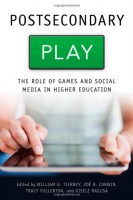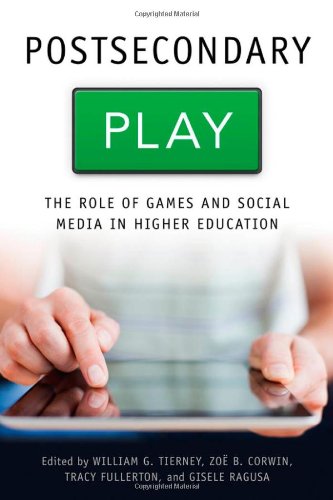 Editors: William G. Tierney, Zoe B. Corwin, Tracy Fullerton, and Giselle Ragusa
Editors: William G. Tierney, Zoe B. Corwin, Tracy Fullerton, and Giselle Ragusa
Publisher: johns Hopkins University Press – 336 pages
Book Review by: Sonu Chandiram
This book summarizes a decade of research in game design and learning. The four editors of this book are scholars in the areas of education, learning, media, and online and electronic gaming.
The purpose of writing this book was to make the college application process easier. Specifically, this book aims to enable students to use the tools of online games and social media to make applying for college less intimidating.
These days, students at the high school and lower educational levels play offline and online games and use social media everyday for hours. They are very comfortable at and enjoy such activities. But when they apply for college, they need to beat deadlines to take tests and get high-enough scores to qualify to apply for admission into colleges of their choice. Then, they need to fill up multiple forms, write essays and send them, then wait many weeks for a response. All of this can be quite overwhelming to them and become a barrier to college access.
This book shows how to use social media and gaming to put students at ease, as well as how to attract, retain, educate, and socialize students.
This book goes into uncharted territory to explore how to tap the power of gaming and social media to find students and engage them into the self-discovery process, and help them build on their potential. In that effort, the editors and authors of the twelve chapters of this three-part book show readers what are the different areas and steps of this process, in the Contents pages:
Introduction: Why Games and Media?
- What is the Current Landscape of Higher Education?
- The Disruptive Future of Higher Education
- The Need to Increase College Enrollment and Completion
- Transition Readiness: Making the Shift from High School to College in the Social Media World
- From Communication to Community: How Games and Social Media Affect Postsecondary Stakeholders
- What’s in a Game?
- What Games Do Well: Mastering Concepts in Play
- The Open-Laptop Exam: Reflections and Speculations
- Games, Passion, and “Higher” Education
- Game-Like Learning: Leveraging the Qualities of Game Design and Play
- What Do We Know About Games and What Do We Need to Learn?
- Assessing Learning in Video Games
- Implications and Applications of Sociable Gaming for Higher Education
- Gender, Social Media, Games, and the College Landscape
- How Much Technology is Enough?
Conclusion: The Shape of Things to Come
This book arose from the desire in 2008 of the editors to find solutions to the problem of low college-going rates among low-income students.
In browsing through college-admission literature, they discovered a general lack of attention on games and social media that were so much a part of the lives of high school students. They were startled with this disconnect between potential college-goers and college admissions people.
So they began a collaborative interdisciplinary program intended to create new technology for game-based college-access tools. They recruited and immediately engaged for the project, a group of high school students to join “a team of educational researchers, game designers, and outreach practitioners” to conceptualize these tools.”
The result was the “development of a series of no-tech, low-tech, and high-tech games designed to engage students in the college preparation process in effective, novel, and fun ways.”
The games that were created were:
- Application Crunch
- Mission Admission
- FutureBound
Get this book to find out the details of these developed games. A fourth game is under development: its purpose is to help students cultivate financial aid knowledge, develop financial literacy, and build decision-making skills around determining a sound college fit.
This book is a laudable accomplishment of the editors and authors named below because it provides concrete solutions to a long-standing problem, and it relates to us the story of how a team was assembled and how it worked creatively together to set goals and reach them.
Editors:
All four editors of this book are on the faculty of the University of South California
William G. Tierney is the Wilbur Kieffer Professor of Higher Education and co-director of the Pullias Center. He is a past president of the American Educational Research Organization (AERO).
Zoe B. Corwin is director of Collegeology, a game designed to teach underserved students how to navigate college admissions at the Pullias Center for Higher Education and Analysis at USC.
Tracy Fullerton is director of the Game Innovation Lab at USC.
Giselle Ragusa studies educational instrument design.
Authors: David Conley, Zoe B. Corwin, Nicole B. Ellison, Tracy Fullerton, James Paul Gee, Carrie Heeter, Henry Jenkins, Adam S. Kahn, Yoon Jeon Kim, Laura W. Perna, Giselle Ragusa, Katie Salen, Mary Seburn, Valerie Shute, William G. Tierney, Matthew Ventura, Lubin Wang, Steven Weiland, and Donghee Yvette-Wohn.







